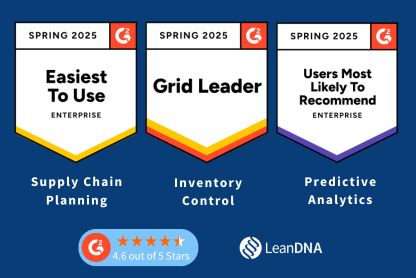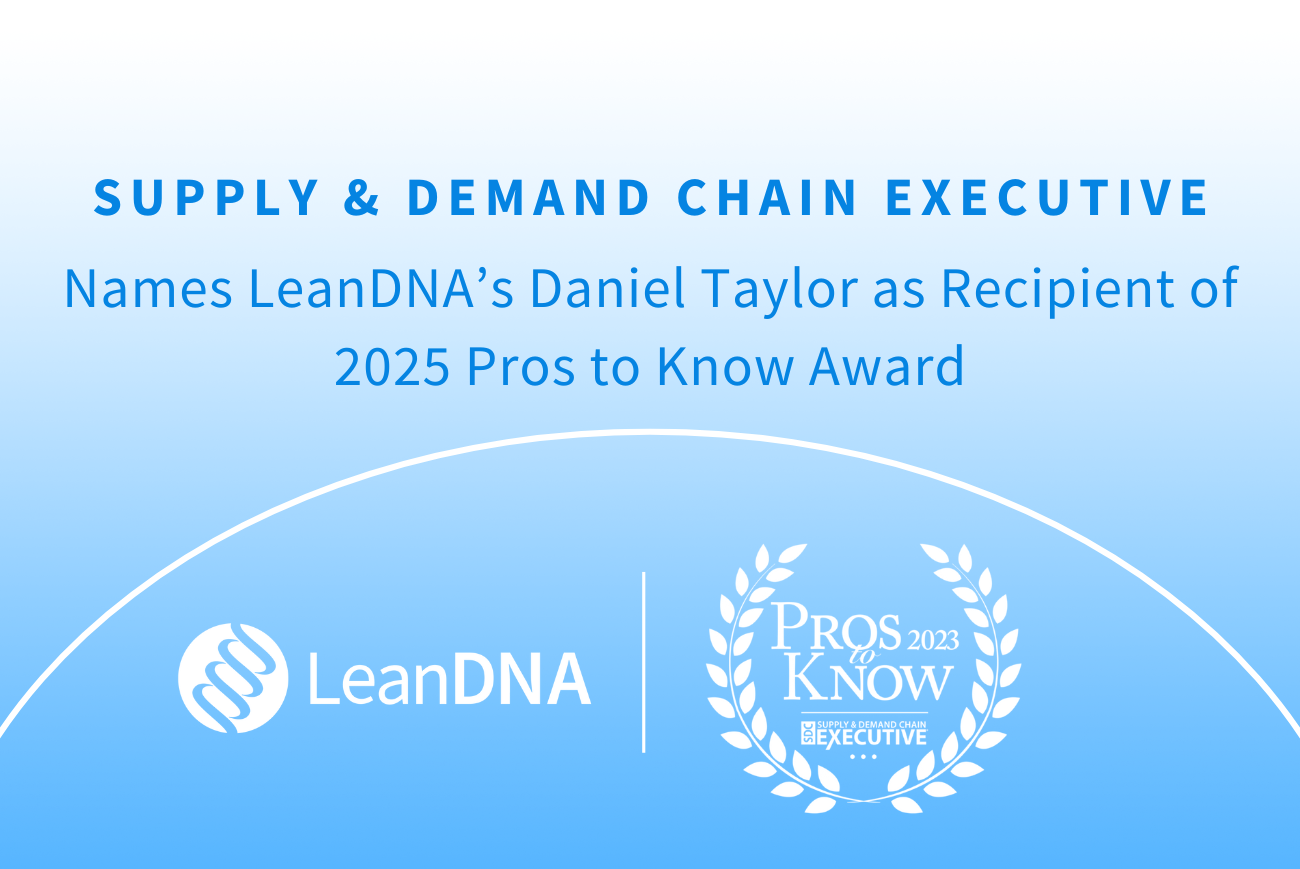Are shortages unavoidable?
Shortages can mean trouble for many manufacturers, especially when the customer is waiting on a purchase. Some companies see this as “unavoidable.” Backorders might be common in a modern, complex supply chain; however, they don’t have to be.
What does “backordered” mean?
Backorders are created when the order for a good or service is placed, but that particular good or service is temporarily unavailable; the item is out of stock with the manufacturer so they are unable to provide just-in-time delivery. In the age of a global pandemic, backorders are back. Manufacturers can account for these by expressing them as a dollar value—such as the value of sales—or the number of units ordered and sold. Usually, they are seen as a negative thing but backorders can also have their benefits.
The benefits of backorders
A company can get a lot of investment capital by putting things on backorder: The customer already purchased the product and now has an influx of cash they can use to purchase. This prevents them from carrying excess/safety stock, which saves not only money but space in warehouses. While having minimal excess inventory is definitely an advantage, a backorder typically signals that the company’s operations are too lean. For business-to-consumer companies, back-ordered goods can be used as a marketing tool. When you must order a PS5 3-months in advance, consumers see this as a sign of a good, in-demand product rather than a backup, and a company that is unprepared for the level of demand for their product.
Why are there so many backorders right now?
In addition to the myriad disruptions into today's market, the lasting effects of lockdowns in the early stages of the pandemic are still being felt throughout the supply chain. The ripple effect of suppliers closing or shutting down continues to create shortages throughout the supply chain—leading to the increase in backorders. The world is no longer the one we knew before, and the same applies to manufacturing.
How can backorders be prevented?
We're glad you asked.
Preventing backorders is a top priority for many just-in-time manufacturers. Many customers depend on getting their orders in a timely fashion, and they WILL find other suppliers if they constantly get backordered. But what can manufacturers do to get ahead of the problem?

1. Auto-Scheduling
Your ERP system should have the capability to automatically reorder inventory and keep your factory on schedule. Auto-scheduling can reduce human error, for example, forgetting to order in the first place. Your ERP should also automate reports to reduce the static, manual spreadsheets of outdated manufacturing. Good scheduling can prevent a company from having to expedite parts in the future.
2. Stock up on best selling items
Having extra stock of fast-moving items can help when the orders start rolling in. This is especially important for seasonal items that are popular during certain times of the year. Creating a plan to adapt to fluctuations in sales is key in preventing a backorder situation from happening; including having ‘a plan for every part’ (PFEP). This can be a spreadsheet or database, but whatever it is, it should drive inventory reduction. These plans may also include safety stocks -- an extra stash to help mitigate risk.
3. Keep Order Requesting Systems Updated
While you can automate ordering, these systems must still be updated. When a quantity or supplier must be changed, so must the requesting system. There are also ways to bring your ordering systems into the modern world, such as online customer portals or inventory management software.
4. Have a Plan B
Plans rarely go as intended. In the age of a global pandemic, this has never been more true. Having a plan B for stocking up is crucial in preventing backorders. These backup plans can involve having a plan for a different supplier, having a back-in-stock alert plugin, or having bad weather backup plans.
How to deal with backorders?
Communicate with customers
The most important part of dealing with backorders is to make sure that the customers have accurate and current information. Customers are easily frustrated when they can’t get updates on an order that was supposed to have arrived already. This is only made worse when they receive inaccurate information that leads the customer to believe that more progress is being made than is true.
Make sure customer-facing teams have accurate information
According to PBD Worldwide, “Nothing is more frustrating to customers than calling in, placing an order with a customer service rep and then finding out later, via email, that the product or item they ordered is on backorder.” Without accurate information, customer-facing teams cannot alleviate the situation in any way. However, if they are in the know, company service representatives can inform and calm upset customers. This is your biggest asset in retaining customers even when an unfortunate event causes a backorder.
How can LeanDNA help prevent backorders?
LeanDNA can help prevent backorders by automating the perfect balance of lean thinking and MRP-driven processes. Manufacturers can gain total visibility into their inventory operation, keeping a pulse of every site, buyer, supplier, and part at risk of being back-ordered.
But most importantly, LeanDNA prescribes the next best action teams can take once risky orders are identified. Curious how? Check out the industry’s first role-based workflows for factory management teams.
"LeanDNA has empowered my team to focus on preventing and resolving issues. There is no way we would have experienced the success we’ve seen in reducing shortages and inventory without the partnership of LeanDNA."

Richard Knutz
Director of Materials and Planning
FAQ
A backorder, also written as back order or back-order, is a term that describes a situation when a part is ordered by a consumer or company and it is not immediately available or available in its usual lead time.
These situations are created when there is far more demand than supply, or industry-wide shortages cause slow downs or shutdowns of production.
Backorder vs.Out of Stock. Are they different?
A backorder is basically the term for when something is out of stock to the customer or consumer and they want it or have already ordered it. Out of stock is a fairly generic phrase that describes an item that is currently unavailable and is also used in the context of manufacturing when components aren’t available.
To expedite something simply means to try to bring it in ahead of its original schedule. If you had something scheduled for a week from now and need it tomorrow, that would be considered expediting. The process is typically to call a supplier and ask them to deliver parts earlier than originally requested.
A synonym for expedite in the manufacturing world is to “move in” an order or to “move it to the left”, referring to a Gantt chart visual of where something is scheduled to arrive.
What is the definition of a shortage?
A shortage is a situation where the supply for a given product or service is lower than the demand for that product or service. In economics, this is also called scarcity.
In manufacturing terms, you can also call something out of stock or a stockout. A backordered item is simply a term given to a finished product in a shortage situation.
Is a pre-order the same as a backorder?
A pre order or pre-order is essentially the same thing as a backorder. In this situation, however, the company is making it clear up front that the product is not yet available and typically they use this to launch high value items that the public will want that will likely be in short supply until the supply and demand even out.
An item that is pre-ordered becomes a backorder once the product is officially launched, and now the company is signaling that it cannot yet meet the demand for the released product.
Manufacturers today are struggling to get their inventory under control.
The inventory control hurdle is a big one for many organizations in the global supply chain. Driven by significant changes in the economy due to the pandemic and facing a wave of digital transformation, the manufacturing industry is about to see some big changes.
Discover new ways to rightsize and optimize inventory
Looking for some inventory management best practices?
The key is to understand your organization’s inventory management maturity. Maturity can range widely, and it is important to not only understand where you lie on the curve, but what you can do to progress as a company.
See where your organization ranks on the inventory management maturity curve




